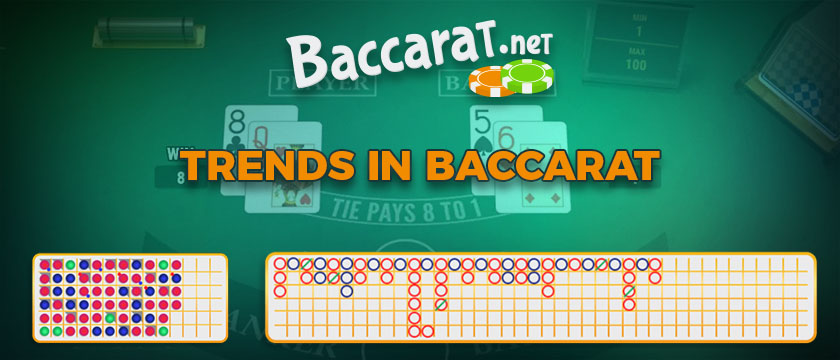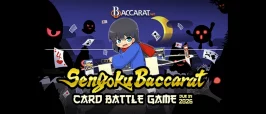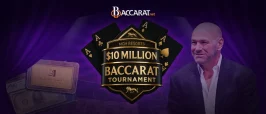Patterns in Baccarat – Using Roadmaps and What They Mean

When playing baccarat, or indeed any other casino card game, most players will instinctively start looking for baccarat trends and patterns in the results. In fact, there is a real tradition of this in baccarat and that is why most games at online baccarat sites come with roadmap scorecards built into them. They are tools designed specifically to help players spot patterns.
It should be stressed that the result of one round of baccarat will have no impact on the result of the next. This means that any patterns are purely coincidental. However, this doesn’t mean that you shouldn’t look for patterns. It just means that you should not rely on them. If you are looking for a way to make the game a bit more interesting, then the roadmaps can be a lot of fun.
What Are Roadmaps?
Before examining the different types of baccarat scorecards, it’s crucial to know what roadmaps are. In baccarat, a roadmap is a grid that tracks the outcome of rounds in a game. By studying these grids, players aim to spot patterns or trends that may indicate future game outcomes.
The main reason players use roadmaps is to make betting decisions. As mentioned, they should not be relied upon and they certainly do not guarantee success. However, as long as you are planning your bankroll properly, they can certainly form part of your betting strategy.
Types of Roadmap Scorecards
There are several types of roadmap scorecards. Each has its own way of displaying game outcomes. Here, we will examine the main ones: the Bead Plate, the Big Road, the Big Eye Boy, the Small Road, and the Cockroach Pig.
Bead Plate
The term “Bead Plate” comes from traditional land-based casinos, where baccarat players are given a plate to track the game’s outcomes. Different colored beads are placed on this plate to denote the results of individual hands. A red bead signifies a win for the Banker, a blue one for the Player, and a green one for a Tie.
If the version of baccarat you’re playing includes the Perfect Pairs side bet, the Bead Plate can be useful for this as well. When either the Player or Banker gets a pair in the initial deal, you mark it accordingly on the grid. For a Player’s pair, a small blue dot goes in the lower right corner of that hand’s grid position. For a Banker’s pair, a red dot is placed in the upper left corner.
Typically, a Bead Plate features a grid with six rows and at least twelve columns. This layout allows for the recording of a minimum of sixty hands. Tracking starts from the top left corner and progresses downwards, filling one column at a time. However, once the bottom of a column is filled, recording resumes at the top of the subsequent column on the right.
Big Road
Unlike the Bead Plate, which is designed for tracking individual hand outcomes, the Big Road roadmap serves to identify patterns by highlighting consecutive wins for either the Player or the Banker. The roadmap’s appearance is similar to an upside-down bar chart filled with blue and red dots to represent Player and Banker wins, respectively. A new column is started each time the winning hand switches from Player to Banker or the other way around. Marks are added to the latest column to record consecutive wins.
To illustrate, if the Banker wins the first hand in a new game set, a red mark goes at the top of the first column. If the Banker wins again, another red mark is added to the same column. However, if the Player wins the next hand, a new column begins with a blue mark.
In cases where a hand results in a Tie, the marking method differs slightly. Rather than starting a new column, a green line crosses out the last red or blue mark. This is done because ties are infrequent, and the likelihood of consecutive ties is exceedingly low.
The conventional layout for the Big Road has columns that are six rows deep. When a specific bet wins more than six times consecutively, it continues into the next column, a phenomenon known as a Dragon Tail. Pairs, as before, are denoted with edge dots on each mark: blue for a Player pair and red for a Banker pair.
Big Eye Boy
The Big Eye Boy roadmap serves as a complementary tool to the Big Road roadmap, helping players analyze if the deck yields random outcomes or showcases detectable trends. Every time a new column begins on the Big Road, a corresponding mark appears on the Big Eye Boy. While they appear similar and often use the same colors, the meanings of the colors differ. On the Big Eye Boy, red indicates a consistent pattern, whereas blue signifies the opposite. The intent is to consult both roadmaps to formulate a betting strategy. For instance, a predominance of red on the Big Eye Boy might encourage a player to continue the pattern observed on the Big Road for their next bet.
Small Road
The Small Road closely resembles the Big Eye Boy but starts a bit later. Specifically, it ignores the column immediately preceding the current one on the Big Road and begins one hand after the first mark in the Big Road’s third column.
Cockroach Pig
Similar in concept to the Small Road, the Cockroach Pig also starts later in the Big Road sequence. It skips the two previous columns on the Big Road and commences one hand after the first mark appears in the fourth column. However, unlike the others that use dots or beads, Cockroach Pig uses diagonal lines for tracking.
An Enjoyable Addition
Understanding baccarat trends and patterns and roadmaps can add a new element of excitement to your game. However, it is important to remember that any patterns you do find are purely coincidental and offer no guarantees about the outcome of the coming rounds. Nonetheless, many baccarat players are extremely superstitious and as long as you are sticking to your bankroll, there is no harm in the practice.



